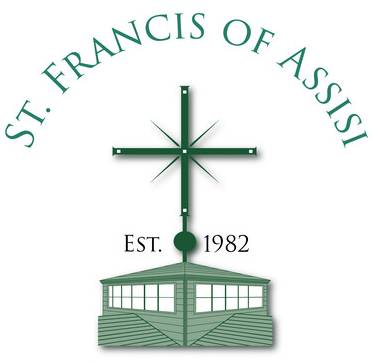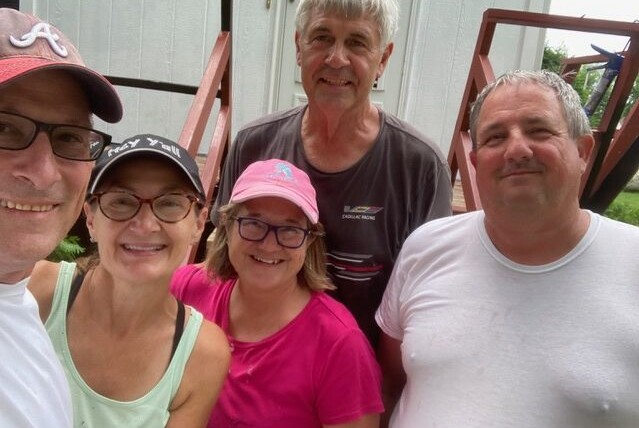It’s been over 40 years since the founding of the St. Francis of Assisi Parish and over 45 years since the Diocese first purchased the property where the parish sits. A series of stories will chronicle and help us all remember where we came from and how the wonderful community of St. Francis, built by those initial ‘founders,’ continues to grow through hard work and tireless parishioner support. This first story chronicles how those founders and the diocese chose the site for our parish and established the boundaries of what was to be the St. Francis of Assisi community.
Catholics were a rarity in the South in the 1970s and 1980s, and many “rumors and innuendoes” about Catholics were commonplace. Pat Kowite, a founder and long-time parishioner of St. Francis and semi-official parish historian, talked about the parish’s early years. “Many people had never knowingly met a Catholic,” she says. She recalled, “I had one person tell me he knew that Research Triangle Park was a plot to bring more Catholics to our area so we could convert Protestants.” Remember, this was 20 years after having a Catholic president of the United States! “When I was running the Faith Formation program,” Pat said, it persisted, saying, “Parents told me their children were openly confronted in schools about their beliefs. Some churches taught kids how to challenge Catholic friends about biblical content.”
Still, the Diocese of Raleigh was looking to expand in the late 1970s into the wilds of northwest Wake County. As is remembered in the St. Francis Parish History compiled by Pat and Donna Sink, parishioners from St. Raphael’s wanted to discuss founding a new parish church, and they weren’t shy about it! Yvonne Foglia and MaryLou Bender, parishioners at St. Raphaels and involved in the Women’s Guild, had a novel idea, ‘Why don’t we invite the bishop to come and talk about building a church in northwest Raleigh?’ With typical ‘Catholic woman’ aplomb, they reached out to the Bishop’s office, and he agreed to come. About forty or fifty folks came that night, and Marylou later said, “A lot of curiosity-seekers, that’s what it was; they wanted to see what was going to happen.” After dinner, they gathered in their living room and sat the bishop before the fireplace. Yvonne said, “The bishop was the main man, but Father (Gerry) Lewis and another priest were there, too.” “Everybody got settled in, and then there was this silence,” MaryLou recalled. Yvonne’s husband Henry spoke up, saying, ‘Okay, bishop, when are we going to get a church?’’
That meeting was impactful in more ways than one. While it made Bishop Gossman aware of the great interest in expanding in North Raleigh, another beneficial outcome of the meeting was, in August of 1978, Father Lewis’ six-year term as the Chancellor of the Diocese of Raleigh ended. Bishop Gossman appointed him pastor of St. Raphael Church and charged him to study the parish’s western area and start a new parish ‘out there.’ Vicki Roberts, another of the founding parishioners who still volunteers at St. Francis, lived at the time in Springdale Estates and recalls hearing that “Bishop Gossman was looking to build a Church in the North Raleigh area.” She remembers, “Leesville Road used to end at Strickland. There was nothing out here at that time; you had to go to Crabtree to even go to a grocery store.”
When the property search began, it proved difficult. “One of our problems back in those days,” Monsignor Lewis recalled, “was that people did not want to sell to Catholics. There was a lot of property around, but not much available to us. John Norkus, from Our Lady of Lourdes Church, was a part-time real estate agent and found this property on Leesville Road.” That property, consisting of 8.86 acres, was purchased from the Watkins and Dale Families for about $50,000. Again, according to the history of St. Francis, “This property was technically in the parish boundaries of Our Lady of Lourdes because Leesville Road was the dividing line. So, according to the diocese’s ‘Mother Parish Policy,’ Our Lady of Lourdes paid for the land.” The sellers signed the deed for the new church site over to Bishop Gossman on March 14th,1979.
In 1987, a woman who lived in the area as a child shared a story from her childhood with the parish. Pat says, “I love this story; It gives me chills.” The woman, Bryna Bozart, lived in the area and would wander the fields and woods on her farm. She was enamored with the movie “The Song of Bernadette” and would take her animals out daily during summer days free of school and eat lunch in the woods like Bernadette. She would bring her favorite book on the life of St. Francis, pray in the woods, and say her rosary. She carried a shoe box with her to hold her lunch and books. One day, she used it to build a ‘shrine’ to St. Francis. She nailed the shoebox to a tree and wrote underneath it in block letters, ‘St. Francis of Assisi.’ Throughout the summer, this was her place. She came, ate lunch, prayed that St. Francis would come to play with her, and said her rosary. She said, somewhat sadly, that ‘time passed, and we lost the farm and moved away.‘ Years later, she saw that a church was built on the land where she used to live. Bryna said that the land the Diocese purchased for the new parish was the same land where her farm had been. She was unsure if it was the same field but said, “You are the other side of the story; St. Francis prepared a place for you.”
The diocese had secured the land, perhaps land destined for it, but a new community needed to form. There was interest in a new Church, and the Catholic population was growing. Research Triangle Park had been growing strongly for over ten years and was continuing its rapid growth. Vicki remembers that she and her husband moved here as IBM employees, and “many people moved here from NY and lived in the North Ridge area.” Many of these transplants came from a Catholic background and tradition. With the site for the new church chosen, the parish boundaries needed to be defined. The diocese established these to be Durham County on the west, the Neuse River/Falls Lake on the north, Creedmoor Road to the east, and Glenwood Avenue (Highway 70) on the south, but this new flock still needed a pastor to lead them.
Father Lewis was building a new community to allow the first pastor to have a nucleus of a parish. Now that the property and boundaries for the new parish were in place, the next step was to find temporary worship space for those Catholics living in the area of the new parish to form that ‘nucleus’ as the diocese began the search for the pastor. The story of those early community masses and the successful pastor search will be coming soon!







